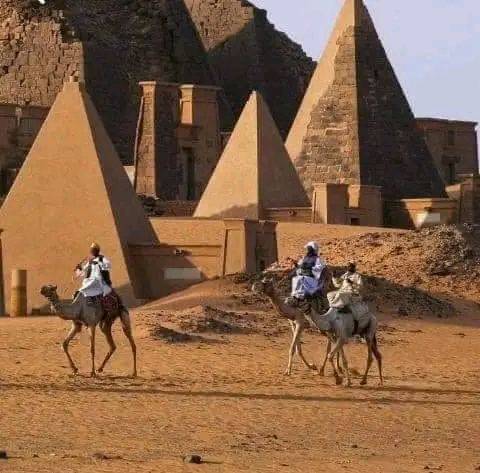Sudan is home to the largest collection of pyramids in the world, with over 220 structures, primarily located at the Meroë site in the eastern desert. These pyramids were built by the ancient Kushite civilization, which thrived in the region from around 300 BC to 300 AD.
Meroë served as the royal capital of the Kingdom of Kush, a significant power that even ruled over Egypt during the 25th Dynasty, known for its “black pharaohs” who embraced and adapted Egyptian architectural styles.
The Meroë pyramids are notably smaller and steeper than their Egyptian counterparts, featuring unique designs that reflect the Kushite culture. Built primarily from granite and sandstone, these pyramids served as tombs for kings and queens, adorned with intricate decorations and artifacts that illustrate the wealth and sophistication of the Meroitic society. The burial practices included offerings and elaborate tomb decorations, showcasing the cultural exchanges with neighboring civilizations, including Egypt and Greece.
Despite their historical significance, the Meroë pyramids have faced challenges, including looting and neglect. In the 1830s, Italian treasure hunter Giuseppe Ferlini destroyed many pyramids in search of artifacts, resulting in a significant loss of cultural heritage.
Today, the pyramids are recognized as a UNESCO World Heritage Site, drawing attention to their importance and the need for preservation.
Tourism to the Meroë pyramids has declined due to economic sanctions and ongoing conflicts in Sudan, with the country now receiving fewer than 15,000 visitors annually.
Efforts are underway to revitalize the tourism industry and raise awareness about the rich history of the Nubian pyramids.
The Nubian pyramids of Meroë stand as a testament to the achievements of the Kushite civilization, reflecting a unique blend of cultural influences and architectural innovation. They highlight the historical significance of Sudan in the broader narrative of ancient civilizations, deserving recognition and preservation for future generations.

